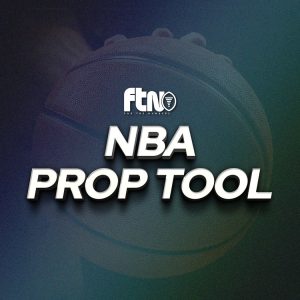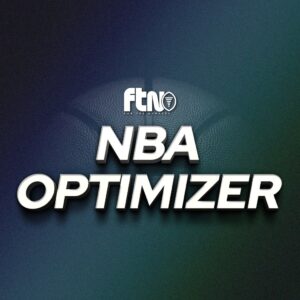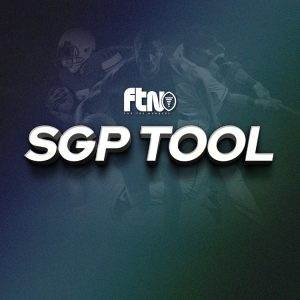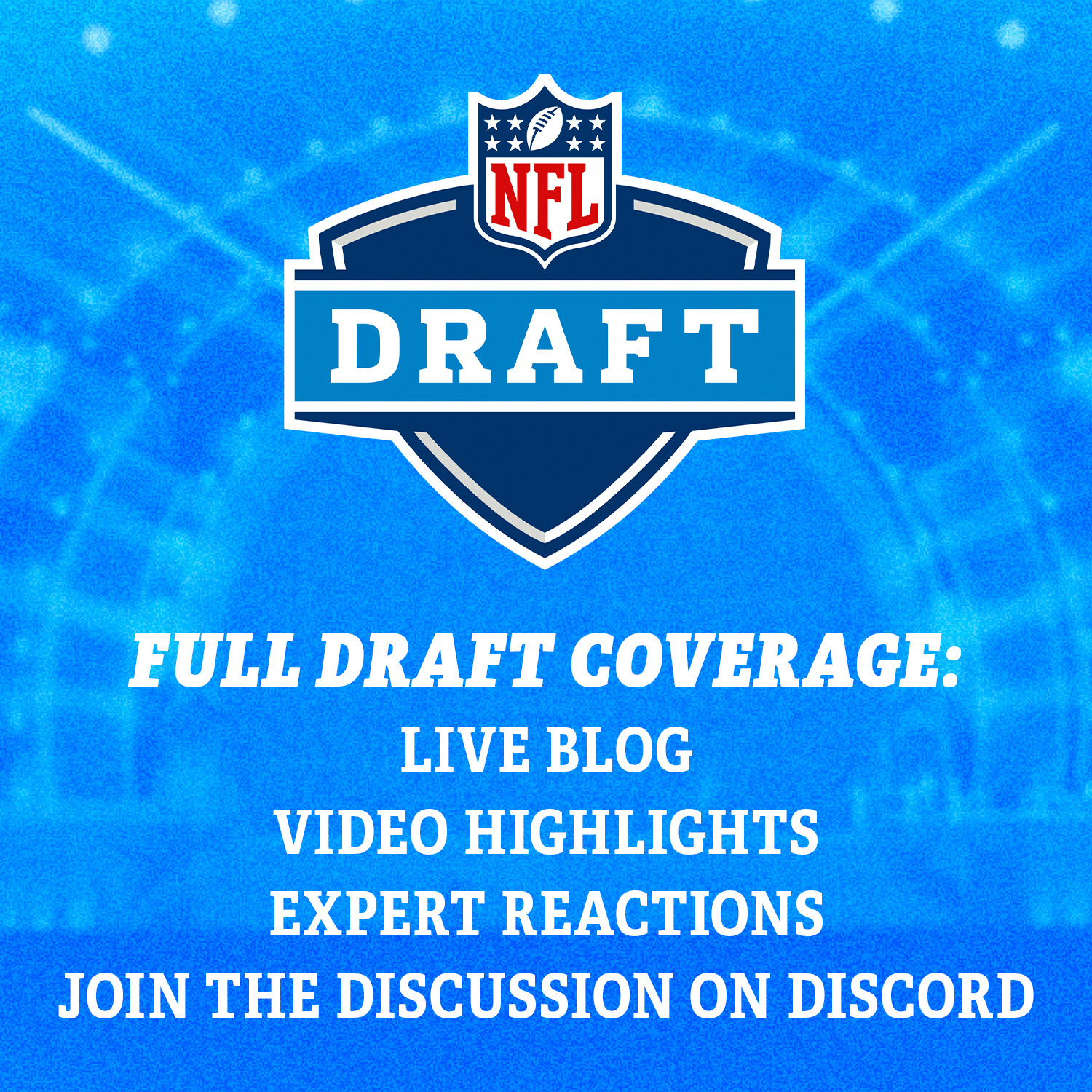
Some weeks, you know that FAAB is going to be active, and, for at least some teams, expensive. Such weeks usually involve a combination of hitters breaking out, one or more changes at closer and enticing prospects getting the call-up. For these weeks, it usually isn’t too difficult for fantasy managers to find players to drop in exchange for very attractive FAAB targets. In my opinion, this is not one of those weeks. While there are plenty of players to target in FAAB tonight, and Vlad’s weekly FAAB article will highlight the best of them (and many others), this is shaping up, at least in my eyes, to be one of the tamer FAAB periods of the season, with a noticeable shortage of high-end options. Absent pressing needs, managers may choose to tinker around the edges of their teams and perhaps try to conserve FAAB for future weeks. During weekends like these, the evaluation of which player or players to drop also should include an analysis of whether certain drops are even necessary.
For instance, if a stud outfield prospect enters the player pool, managers targeting him often will plan to drop their worst outfielder absent an injured player or other obvious drop. When the FAAB options are less enticing, managers need to make sure that the player being targeted actually is better than the player that would be dropped. Oftentimes, the planned drop is a player who managers researched, ranked and/or tiered and drafted based on his track record, team context, underlying metrics, etc., but who may be underperforming. In comparison, many FAAB targets will be players who managers researched and rejected – or who didn’t even rise to the level of being included in pre-draft evaluations – whose track records are less attractive (or largely nonexistent) but may be having a strong week or even month. In evaluating whether to attempt these potential moves, managers may want to ask themselves the following questions:
- Has the case for owning the rostered player truly changed, or is he simply underperforming? Has the recent underperformance altered that player’s outlook moving forward?
- Is the targeted player truly worth rostering and better than the planned drop, or is this a case where one player is hotter than the other? For how long has the intended addition outperformed the planned drop (and vice versa)?
- If the targeted player is better, how much better is the likely level of improvement moving forward (as opposed to looking back) with the amount of FAAB being bid to try to win the targeted player?
Managers should utilize FAAB to improve their teams whenever possible. At the same time, swapping an established player who may be slumping for a less-established player enjoying a hot streak often will lead to regret, and managers also should be leery of spending material amounts of FAAB on what may be little more than sideways moves. Such spent FAAB will be missed later this season, I assure you. Thus, use FAAB to improve your teams when and where it makes sense, but sometimes fewer moves (and drops) are preferable to more moves (and drops).
Some of the players who should at least be considered as potential drops this week are set forth below in the following two tables – the first includes hitters and the second includes pitchers. In addition to the player’s name, team and position, the tables include the player’s ownership percentage in the premier 15- and 12-team contests: the NFBC’s Main Event and Online Championship, respectively. Finally, the tables list my rankings as to how strongly – or not – I feel each particular player should be dropped in those 15-team and 12-team formats, respectively. The key to these rankings, from 0-4, is as follows:
- 0 = Do not drop
- 1 = Team context dependent; probably should not be dropped on most teams
- 2 = Team context dependent; compelling arguments to drop and not drop
- 3 = Team context dependent; probably should be dropped on most teams
- 4 = Drop
Potential Hitter Drops
| Name | Team | Position | Roster% (15tm) | 15tm Drop? | Roster% (12tm) | 12tm Drop? |
| Christian Encarnacion-Strand | CIN | 1B | 91% | 1 | 56% | 2 |
| Jung Hoo Lee | SF | OF | 54% | 4 | 52% | 4 |
| TJ Friedl | CIN | OF | 100% | 2 | 99% | 3 |
| Esteury Ruiz | OAK | OF | 97% | 3 | 88% | 3.5 |
| Sean Bouchard | COL | OF | 51% | 3 | 3% | 4 |
| Oswaldo Cabrera | NYY | 3B/OF | 63% | 2 | 66% | 3 |
| MJ Melendez | KC | OF | 90% | 1.5 | 66% | 2.5 |
| Tommy Edman | STL | 2B/SS/OF | 84% | 3 | 58% | 4 |
| Will Brennan | CLE | OF | 95% | 1.5 | 15% | 3.5 |
| Josh Jung | TEX | 3B | 100% | 2.5 | 82% | 4 |
| Connor Joe | PIT | 1B/OF | 100% | 0.5 | 62% | 1.5 |
Last week, the Reds put Christian Encarnacion-Strand on the IL with a fractured bone in his wrist. He is expected to be out for 4-6 weeks. Encarnacion-Strand has been disappointing this season, with only 2 home runs in 123 plate appearances and a .190 average. While the decision to hold or drop Encarnacion-Strand is somewhat team-dependent, I think he’s a hold in most 15-team leagues and a good many 12-team leagues. While Encarnacion-Strand was struggling, he’s a legitimate 30-homer bat who plays in an extreme hitter’s park. Early on, Encarnacion-Strand has not been hitting the ball with the same exit velocity as last season, but he’s also been somewhat unlucky (.245 xBA is 55 points higher than his average; .293 SLG versus .446 xSLG). Thus far, Encarnacion-Strand only has a 7.1% HR/FB; it was 22.0% in the MLB last season, and notably over 20% in every one of his MiLB stints across four levels. I’m confident a rebound in HR/FB is coming later this season. There are not a lot of attractive corner infield options available in FAAB most weeks, and many fantasy teams are in need of a power infusion. In 15-team leagues, I think Encarnacion-Strand is a hold for most teams, except those that otherwise are strong in power and/or already have multiple stashes. It is a closer call in 12-team leagues, and I can understand why teams capable of filling all corner infield positions with solid options would prefer to drop and preserve roster flexibility.
TJ Friedl is having a rough season. On March 16, Friedl suffered a broken wrist on a sliding defensive play. Following a roughly six-week recovery period, Friedl was hit by a pitch in only his sixth game of the season, suffering a broken left thumb. At first, there was hope that the thumb injury was only a bruise, and Friedl was a popular add in FAAB last Sunday. There currently is not much clarity on Friedl’s likely recovery time, although Reds manager David Bell suggested it could be approximately five weeks. Friedl is a tough call in 15-team leagues but probably is a drop in most 12-team leagues. At his best, Friedl is a solid leadoff hitter with strong speed and some power (18 HR, 27 SB, .279 AVG in 2023) for what can be a dynamic Reds offense. A less rosy perspective would point out that Friedl has a limited track record in the majors, probably played over his skis to some extent last season and the Reds offense – outside of Elly De La Cruz – has been anything but dynamic thus far in 2024. Whether Friedl is a hold or drop should be based on whether a team (i) can afford what may be a month-long stash and (ii) needs stolen bases. I think Friedl’s speed is more reliable than his power, but his stolen base total will reflect his ability to get on base consistently.
Last season, Esteury Ruiz was a game-changer, at least for fantasy purposes, compiling 67 stolen bases in 132 games. This season, however, has been massively disappointing for Ruiz’s fantasy managers. Ruiz made the team in the spring, as expected, but then was demoted early in the season so that Oakland could make room for Tyler Nevin (illustrating how Ruiz is viewed by the team). Ruiz has since been promoted back to the majors but is failing to contribute much to either the A’s or fantasy managers. Unlike 2023, Ruiz only is receiving limited playing time. In Week 6, Ruiz had 10 at bats; in Week 7, he had 6 at bats and thus far this week, he has 7 at bats. Making matters worse, Ruiz is not doing much when he does play – he has 2 homers and 4 stolen bases (in 8 attempts) with a .200 average – and so Ruiz appears unlikely to gain much playing time absent one or more injuries. At this point, starting Ruiz given his limited usage in the hopes of capturing a rare three-steal game does not seem like a great strategy. Nothing the A’s have done so far makes me think they view Ruiz as an integral part of the team, either now or in the future, and you do not need to be a professional baseball scout to conclude that Ruiz’s fantasy upside is higher than his real-life baseball upside. I suppose that managers desperate for stolen bases can treat Ruiz as a prospect and hold him waiting for that uncertain day when, due to trade or injury, his playing time increases. That could happen, and it is possible he has a big second half in the stolen base department. Personally, I would not roster Ruiz at this time – he is a flawed player not valued by his team who provides little-to-no help in four of the five hitting categories, is on a mediocre or worse team that plays its games in an extreme pitcher’s park and currently starts only sparingly (and, when he does, hits at the bottom of the lineup).
Many fantasy managers were expecting more out of MJ Melendez this season. In 2023, his first being used primarily as an outfielder, Melendez hit 16 home runs with 6 stolen bases and a .235 average. Looking under the hood, Melendez hit the ball very hard (93.2 mph EV), with a 11.4% Barrel% and 49.6% HardHit%. Managers expecting these metrics to lead to more power in 2024 have been disappointed. Coming into today’s game, Melendez has 4 home runs, 2 stolen bases and a .182 average. While still at respectable levels, Melendez’s exit velocity, barrel rate and hard-hit rate all have declined. At this point, Melendez is little more than an “empty power” profile with a low average and not all that much power (thanks in part to his home stadium, which suppresses power). Rest-of-season projections anticipate mid-teen homers with a handful of steals and an average around .235 to .240. That level of performance probably is worth holding onto in 15-team leagues but strikes me as slightly optimistic based on what we have seen from Melendez thus far this season. I do think his average will rise, as his low BABIP (.223) regresses toward his career average (.278). That said, I consider Melendez to be a conditional hold – I would not drop Melendez for anyone but would be open to dropping him for a potential longer-term replacement. Melendez still plays regularly for a decent-hitting team, and so has some value moving forward, but solid-power, low-average bats are not scarce; his skillset can be found elsewhere.
Recent reports suggest that Rangers third baseman Josh Jung will be out longer than first anticipated. Jung’s recovery from a broken wrist is taking longer than expected, and he will be out until at least early-July and perhaps through the All-Star break. At a minimum, this news should prompt all fantasy managers stashing Jung to reevaluate this decision. Without question, when healthy, Jung is a real fantasy asset who plays for a strong team and at a position that has not been easy to fill well this season. That noted, and returning to a recent topic of these articles, the time managers already have invested in stashing Jung is a sunk cost. It cannot be recovered, and, as difficult as it may seem, that time should have no bearing on the decision as to whether Jung is a hold or a drop tonight. Rather, the evaluation that should be made now is whether Jung is worth stashing for 6-8 weeks from this point forward, irrespective of the time previously spent – and lost – stashing him. This is a team-dependent call. I can see continuing to hold Jung in 15-team formats if possessing ample roster flexibility and a real need for a power-hitting corner infielder. Absent that, the duration of the stash makes Jung a drop in my eyes.
Speaking of sunk costs, fantasy managers are wondering what to do about Tommy Edman and his never-ending recovery from wrist surgery. Edman is a multi-positional (2B/SS/OF) speedster who also has some pop and sometimes hits leadoff for the Cardinals. Over the last three seasons, Edman has averaged approximately 12 home runs, 85 runs and 30 stolen bases, which is a very valuable profile for fantasy. Bothered by wrist pain, Edman underwent surgery in October 2023 and had been expected back around Opening Day or shortly thereafter. Since then, it’s been one setback after another, and Edman recently was placed on the 60-day IL, making him ineligible to return before May 24. Even that date, however, is not meaningful, as Edman has yet to be cleared for full baseball activities. At this point, Edman does not appear close to embarking on a rehab assignment, and I would be surprised if he is activated before the All-Star break. With sympathies to managers who have stashed Edman for weeks, or even the entire season, I think he’s a drop for most teams, especially in 15-team leagues. Something appears amiss with Edman’s wrist, and at this point, I do not think he is worth stashing for 4-6 weeks. Even if Edman can make it back by early-July, there is no guarantee that he is the same player we witnessed the last few years. Wrist injuries can zap power, and it is unclear how frequently the Cardinals will want Edman to jeopardize his wrist by stealing bases. St. Louis also has been a below-average offense to this point, and I am not sure that changes in the second half. Managers should forget that they have stashed Edman up until today – that is a sunk cost at this point – and evaluate whether he is worth holding from this point forward.
Jung Hoo Lee’s initial MLB season has come to an end. Lee injured his shoulder crashing into an outfield wall, and, on Friday, the Giants announced that Lee will be undergoing season-ending surgery for a torn labrum in his left shoulder. Lee is a drop in all formats.
Potential Pitcher Drops
| Name | Team | Position | Roster% (15tm) | 15tm Drop? | Roster% (12tm) | 12tm Drop? |
| Keaton Winn | SF | SP | 86% | 3 | 38% | 4 |
| Jose Butto | NYM | SP | 97% | 2.5 | 82% | 3.5 |
| Garrett Whitlock | BOS | SP | 100% | 3 | 88% | 3.5 |
| Taijuan Walker | PHI | SP | 72% | 2 | 7% | 4 |
| Edwin Diaz | NYM | RP | 100% | 0 | 100% | 0 |
| Michael Lorenzen | TEX | SP | 95% | 1 | 24% | 3.5 |
| Max Scherzer | TEX | SP | 100% | 2.5 | 74% | 4 |
| Hayden Wesneski | CHC | SP/RP | 60% | 2.5 | 22% | 4 |
| Zack Littell | TB | SP | 100% | 0 | 98% | 0.5 |
| Aaron Civale | TB | SP | 98% | 0.5 | 91% | 1 |
| Casey Mize | DET | SP | 100% | 0.5 | 90% | 1.5 |
| Frankie Montas | CIN | SP | 98% | 1 | 70% | 2 |
On Thursday, the Mets demoted Jose Butto. Considering Butto was striking out a batter per inning with a 3.18 ERA and 1.13 WHIP, the decision was puzzling. To the extent Butto has a weakness, it is control – he’s walked 21 batters in 38 innings. While his control is not good, he has limited baserunners by allowing only 22 base hits. A positive spin on Butto is that he’s a gutty pitcher, who has performed well, keeps the Mets in games and should be back in the majors at some point this season. If a fantasy manager in a 15-team league really likes Butto and has the roster space to stash him for a few weeks in the hope of a quick return, I can see holding him. In the majority of situations, however, I think Butto is a drop, especially in 12-team formats but also 15-teamers. With due respect for Butto’s strengths, he is not special. Butto has two career wins, a 10.9% K-BB% (8.4% this season) and has been demoted by his team. Unlike an injury situation, here the Mets are choosing not to play Butto over pitchers such as Jose Quintana and Adrian Houser. Tylor Megill will be activated on Monday and inserted into the rotation, and David Peterson is on his way back soon. While Butto may be recalled at some point, I do not think he has the upside to be worth stashing. While very limited exceptions, the only players in the minors worth stashing are compelling prospects waiting to be promoted or major leaguers on rehab assignments. Players demoted for performance-related reasons – even if questionable – are rarely worthy of stashing. Managers also are reminded that because this is not an injury situation, there is nothing but speculation as to if and when he may be recalled. Like other recommended drops, managers will be accorded one or more future opportunities to reacquire Butto during a future FAAB period.
On Friday, Keaton Winn was placed on the 15-day IL with a right forearm strain. Winn’s injury initially was described as mild, but experienced fantasy managers know to take all injury-related recovery times reported by managers and players with a huge grain of salt. Interestingly, even after the IL designation, the Giants still are referring to the injury as mild, as if a minimum absence is all but guaranteed. When it comes to pitchers with forearm strains, it usually pays to be cautious. Even if Winn is back in about two weeks, he may suffer a recurrence or be ineffective. In Winn’s first six starts, he pitched 34 innings and surrendered only 12 earned runs. In Winn’s last three starts, however, he lasted only 8.1 innings and gave up a whopping 17 earned runs, leaving him with a 6.17 ERA and 1.30 WHIP for the season. I’m not sure Winn is a good enough pitcher to warrant holding for at least two weeks, and possibly more. Winn’s last three disastrous starts lead me to think that either (i) he is not that good, making him a drop, or (ii) his forearm issue is responsible for the recent poor performance, which means he likely will need more than two weeks to get right, which also makes him a drop. Fantasy managers who liked what they saw from Winn and have the room for a stash in the 15-team format could decide to give him a few weeks to see if he makes it back quickly and looks improved in his first start back.
On April 17, Garrett Whitlock was placed on the IL with a strained oblique. At the time, Whitlock was off to a fantastic start, with one win, 17 strikeouts in 18.1 innings and strong ratios (1.96 ERA, 1.15 WHIP) over four starts. Whitlock’s oblique had been healing nicely, and he pitched effectively in a rehab start this past Wednesday. On Friday, however, reports surfaced that Whitlock is experiencing elbow pain, and there is concern within the Red Sox organization that he might be out for an extended period of time. Officially, Whitlock has been shut down, will be undergoing tests this weekend and some news is expected on Monday. Based on these reports, I fear Whitlock may be a drop, with the only question being timing. This is not a setback, but an entirely new injury. If Whitlock is experiencing pain in his throwing elbow, almost any scenario will call for him to be shut down from throwing until the pain is completely gone. Then, assuming some period of time has elapsed, Whitlock will need to be built up again, going through such steps as playing catch, throwing long toss and then bullpens, pitching to live batters and then making multiple rehab starts, with any renewed pain causing an immediate halt to the process. If fantasy managers need to make use of Whitlock’s roster spot, I fear it probably is safe to drop him tonight. Alternatively, if managers can hold for one more week, it might be worthwhile to do so if only to obtain a more detailed diagnosis on his elbow injury, along with an estimated recovery time. Lastly, managers are advised to keep monitoring the news on Whitlock today; it is possible that information may leak prior to FAAB running that solidifies managers’ decisions to hold or drop.
Max Scherzer suffered a setback this past week, and the timing of his return to the Rangers rotation is uncertain, forcing fantasy managers to make a difficult decision. Scherzer had offseason back surgery and initially was not expected back until late-June or July. For some time, it appeared that Scherzer’s managers were going to be rewarded with an early return, as initial reports placed him ahead of schedule. Scherzer made a rehab start but suffered a setback that has been described as a nerve issue. Initially, I would drop Scherzer in 12-team formats. In 15-team formats, it is a tougher call, due primarily to the scarcity of good starting pitching. The cases of Jung, Edman and Scherzer are a painful reminder of the dangers of holding injured players – you can incur the cost of an empty roster spot and numerous potential FAAB acquisitions that were foregone because of the stash, only to have your player suffer a setback that either delays or eliminates the “payback” for your sacrifice. In this case, I lean toward dropping Scherzer. With the latest setback, it is not clear to me when Scherzer is likely to be activated and, when it comes to backs and nerves, the risk of recurrence appears high. Additionally, Scherzer will turn 40 in late-July, and at this stage in his career, him pitching like an ace when he does make it back is far from certain.
Fantasy managers rostering Michael Lorenzen may have expected more, but, thus far, he has pitched as I would have expected. Lorenzen is no more than an “innings eater” who happens to be on a good team. Thus far, in six starts, Lorenzen has a solid stat line (2 wins, 3.75 ERA, 1.25 WHIP) but only 27 strikeouts in 36 innings. If anything, Lorenzen is outperforming his peripherals (4.92 SIERA), due to a low (.239) BABIP. Lorenzen’s current 9.4% SwStr% is exactly the same as what he generated in 2023, and his mediocre 18.8% K% actually is slightly better than the 17.8% rate he had last season. What has been perplexing is Lorenzen’s 12.5% BB%, which is much higher than his 2023 rate of 7.5%. As long as Lorenzen has a rotation spot on the defending champions – which, thanks to injuries, appears secure for now – he is worth rostering in 15-team leagues. In those deep leagues, I would hold Lorenzen, but he would not be an automatic start for me. If managers have a strong enough rotation that they only are starting Lorenzen infrequently, I doubt dropping him would come back to bite them badly, but starting pitching depth is valuable, and I would be reluctant to drop Lorenzen unless acquiring a better replacement. In 12-team leagues, I do not see Lorenzen as anything other than a streamer when he has a favorable matchup, primarily by managers hunting wins.
Potential Disaster Starts
Set forth in the table below are starting pitchers I believe have real disaster potential for the coming week. In order to make this section of the column as actionable as possible, pitchers who are sparsely rostered have been excluded. Instead, I am going to challenge myself by focusing solely on pitchers who are at least 90% rostered in the Main Event or at least 60% rostered in the Online Championship. The pitchers are ranked from 1 to 10 for disaster potential in the coming week, with the highest numbers reflecting pitchers I am highly unlikely to start and who strike me as the biggest potential disasters.
| Pitcher | Team | Matchup #1 | Matchup # 2 | Disaster Level | Notes |
| Brandon Pfaadt | ARI | @ LAD | 7 | Like the pitcher, hate the matchup; sometimes playing it safe is the better approach | |
| Andrew Abbott | CIN | v SD | v LAD | 8 | Not as good as surface stats; two tough games at Great American is risky |
| Cristopher Sanchez | PHI | @ COL | 8 | Rockies are playing; Sanchez allows contact and Coors elevates BABIP | |
| Michael King | SD | @ CIN | v NYY | 6.5 | Trip to Great American and then “revenge” game versus former team; he’s been inconsistent |
| Lance Lynn | BAL | v BAL | 7 | O’s tied with Yankees for most homers; Lynn’s Achilles’ heel is homers allowed | |
| Andrew Heaney | TEX | @ PHI | 7.5 | Heaney has been better than expected, but do you really want to tempt fate here? |
Week 8 was a mixed week for me in terms of picking disasters. Because I am limiting myself to very heavily-rostered pitchers, anticipating pitching disasters can be quite challenging, and that was true this past week. Frustratingly, what otherwise could have been a very strong week was undone by two pitchers who continue to massively outperform their peripherals – Javier Assad (1.49 ERA versus 3.98 SIERA) and Tyler Anderson (2.72 ERA versus 4.85 SIERA), who dominated in road starts against the Braves and the Rangers, respectively. In the interests of accountability, set forth below are the results of my “Disaster” picks thus far. Week 8 shows results through yesterday’s games and will be updated next week.
| Week | IP | H+BB | ER | Wins | Strikeouts | ERA | WHIP |
| Week 2 | 55.2 (11 GS) | 69 | 28 | 2 | 60 | 4.53 | 1.24 |
| Week 3 | 33.0 (8 GS) | 55 | 14 | 2 | 30 | 3.82 | 1.67 |
| Week 4 | 40.0 (8 GS) | 55 | 21 | 3 | 36 | 4.73 | 1.38 |
| Week 5 | 36.0 (6 GS) | 32 | 11 | 2 | 38 | 2.75 | 0.89 |
| Week 6 | 46.2 (8 GS) | 56 | 19 | 4 | 34 | 3.66 | 1.20 |
| Week 7 | 52.1 (10 GS) | 70 | 30 | 0 | 49 | 5.16 | 1.34 |
| Week 8 | 32.2 (6 GS) | 43 | 12 | 3 | 30 | 3.31 | 1.32 |
| Season Totals | 296.1 (57 GS) | 380 | 135 | 16 | 277 | 4.10 | 1.28 |


























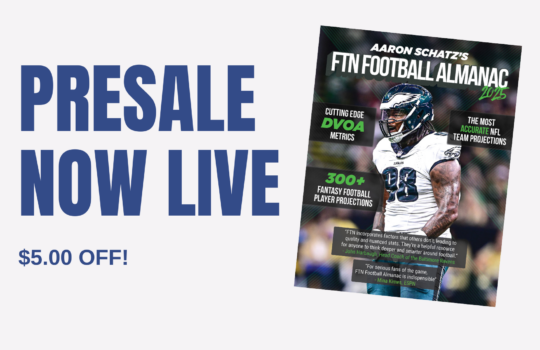



















 New York Jets
New York Jets  New England Patriots
New England Patriots  Miami Dolphins
Miami Dolphins  Buffalo Bills
Buffalo Bills  Pittsburgh Steelers
Pittsburgh Steelers  Cleveland Browns
Cleveland Browns  Cincinnati Bengals
Cincinnati Bengals  Baltimore Ravens
Baltimore Ravens  Tennessee Titans
Tennessee Titans  Jacksonville Jaguars
Jacksonville Jaguars  Indianapolis Colts
Indianapolis Colts  Houston Texans
Houston Texans  Las Vegas Raiders
Las Vegas Raiders  Los Angeles Chargers
Los Angeles Chargers  Kansas City Chiefs
Kansas City Chiefs  Denver Broncos
Denver Broncos  Washington Commanders
Washington Commanders  Philadelphia Eagles
Philadelphia Eagles  New York Giants
New York Giants  Dallas Cowboys
Dallas Cowboys  Minnesota Vikings
Minnesota Vikings  Green Bay Packers
Green Bay Packers  Detroit Lions
Detroit Lions  Chicago Bears
Chicago Bears  Tampa Bay Buccaneers
Tampa Bay Buccaneers  New Orleans Saints
New Orleans Saints  Carolina Panthers
Carolina Panthers  Atlanta Falcons
Atlanta Falcons  San Francisco 49ers
San Francisco 49ers  Seattle Seahawks
Seattle Seahawks  Los Angeles Rams
Los Angeles Rams  Arizona Cardinals
Arizona Cardinals 

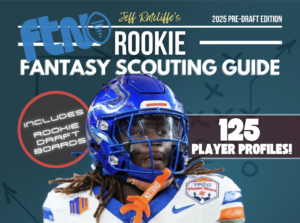

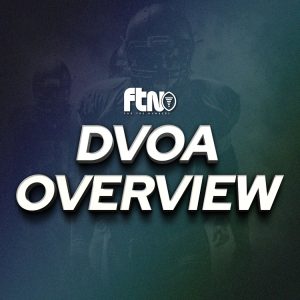
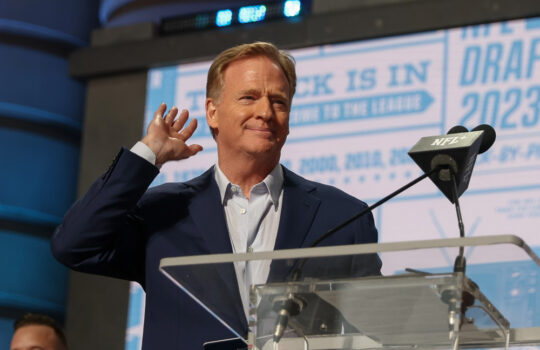
 Boston Celtics
Boston Celtics  Brooklyn Nets
Brooklyn Nets  Philadelphia 76ers
Philadelphia 76ers  New York Knicks
New York Knicks  Toronto Raptors
Toronto Raptors  Chicago Bulls
Chicago Bulls  Detroit Pistons
Detroit Pistons  Milwaukee Bucks
Milwaukee Bucks  Cleveland Cavaliers
Cleveland Cavaliers  Indiana Pacers
Indiana Pacers  Orlando Magic
Orlando Magic  Atlanta Hawks
Atlanta Hawks  Charlotte Hornets
Charlotte Hornets  Miami Heat
Miami Heat  Washington Wizards
Washington Wizards  Denver Nuggets
Denver Nuggets  Minnesota Timberwolves
Minnesota Timberwolves  Oklahoma City Thunder
Oklahoma City Thunder  Portland Trail Blazers
Portland Trail Blazers  Utah Jazz
Utah Jazz  LA Clippers
LA Clippers  Golden State Warriors
Golden State Warriors  Los Angeles Lakers
Los Angeles Lakers  Phoenix Suns
Phoenix Suns  Sacramento Kings
Sacramento Kings  Dallas Mavericks
Dallas Mavericks  Houston Rockets
Houston Rockets  Memphis Grizzlies
Memphis Grizzlies  New Orleans Pelicans
New Orleans Pelicans  San Antonio Spurs
San Antonio Spurs 



